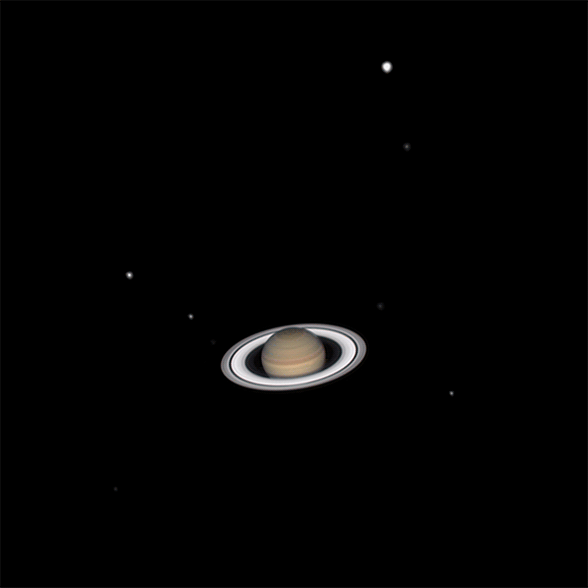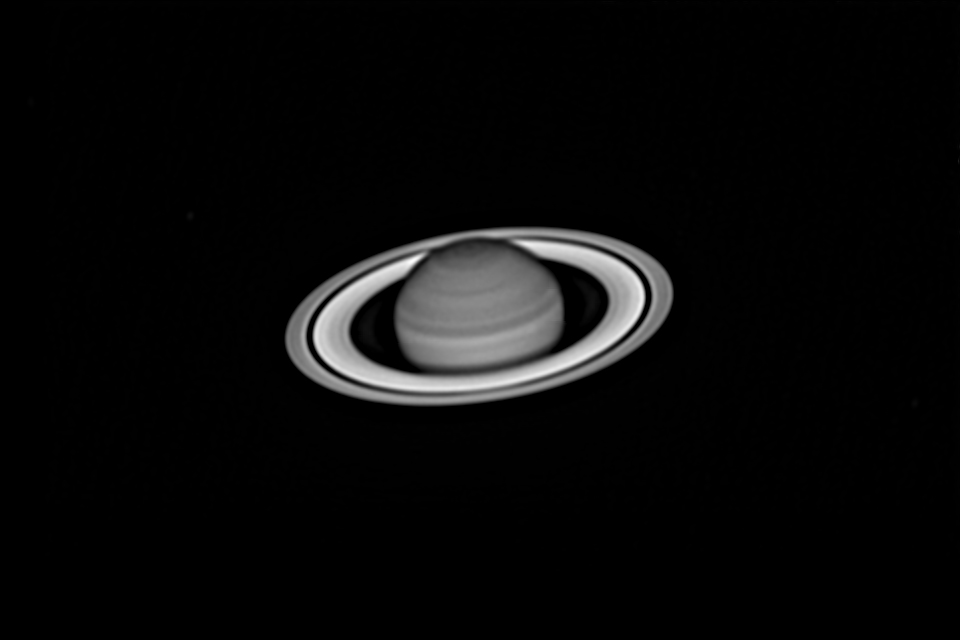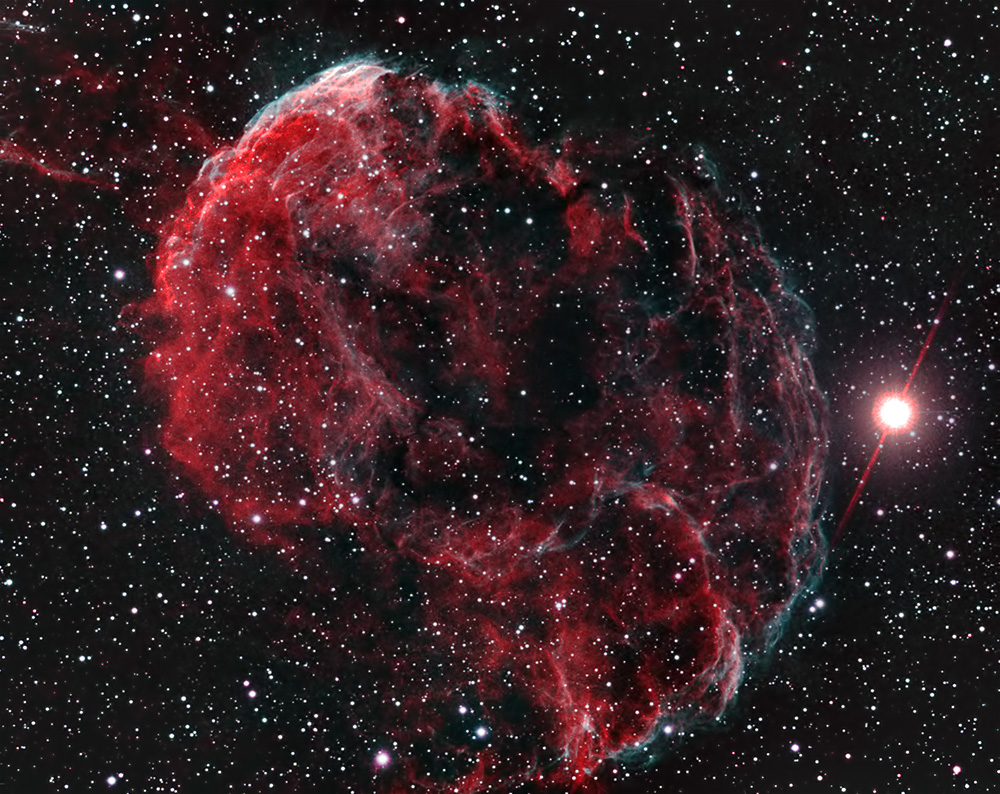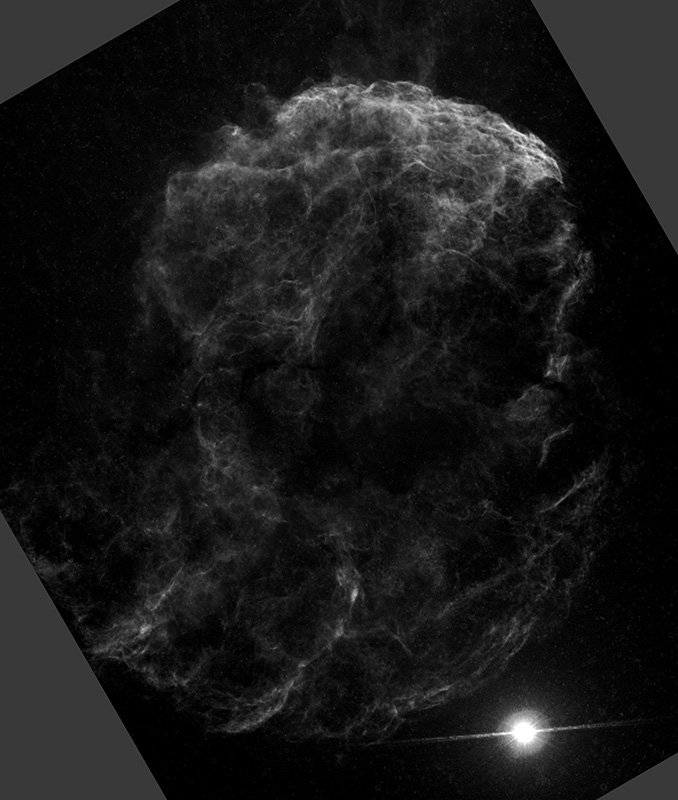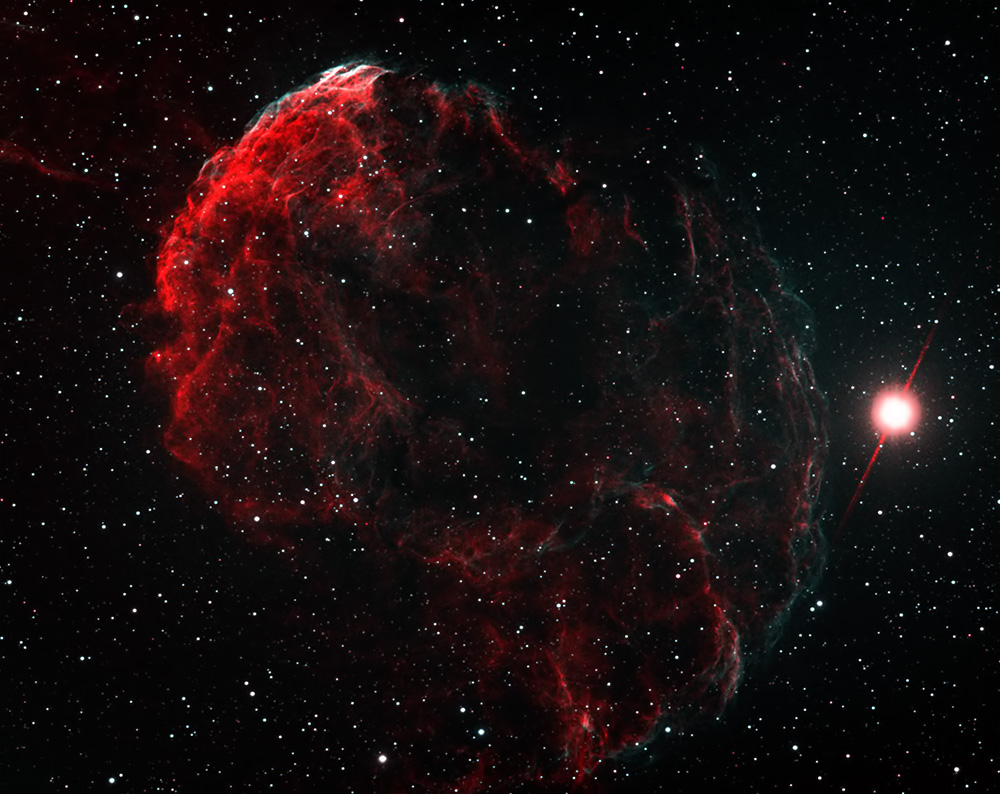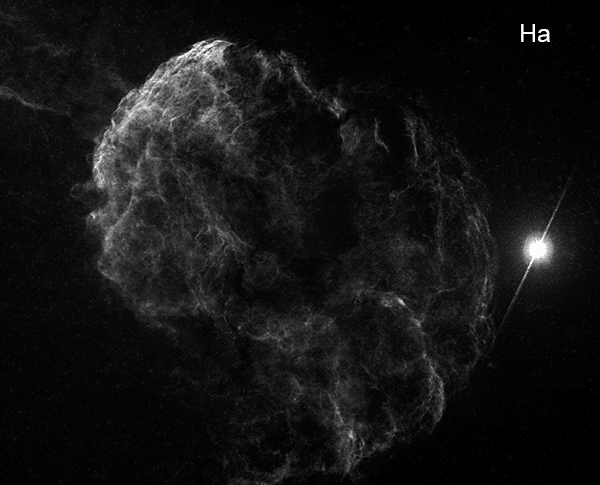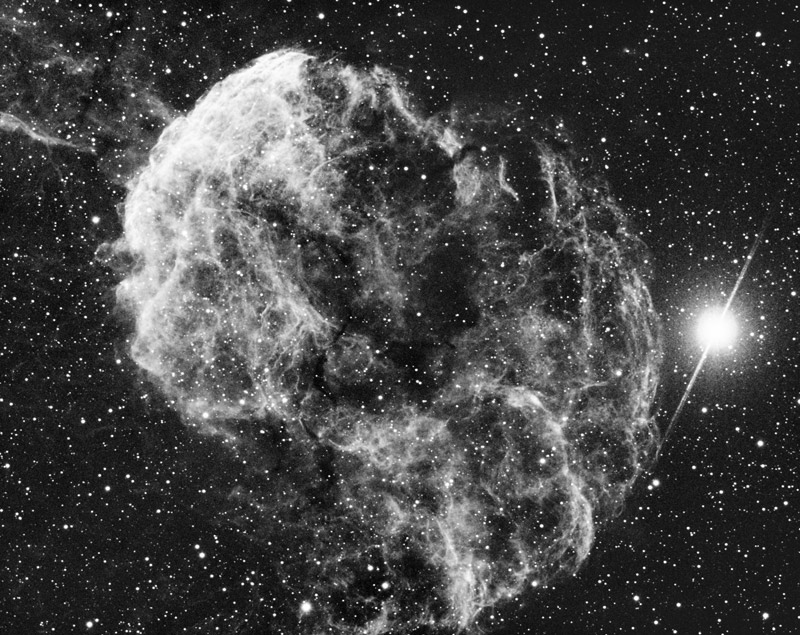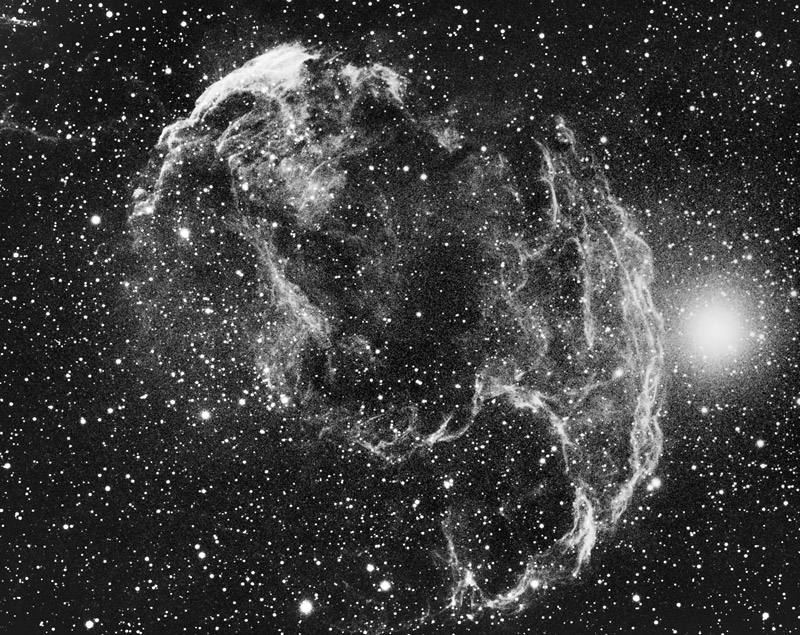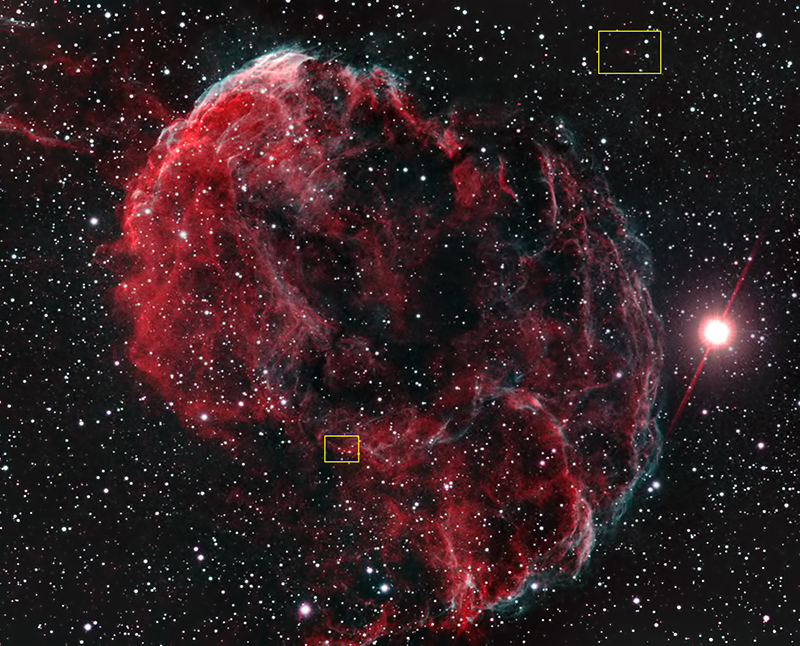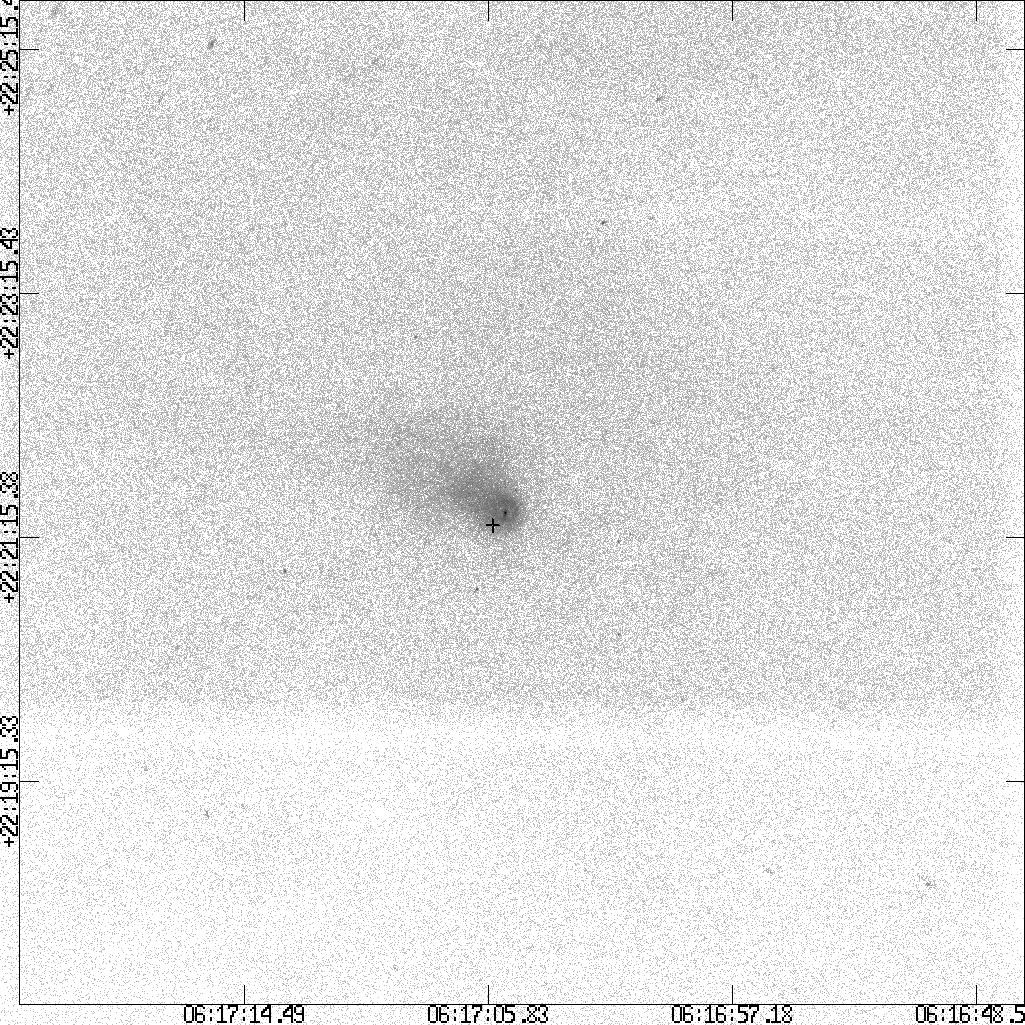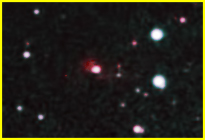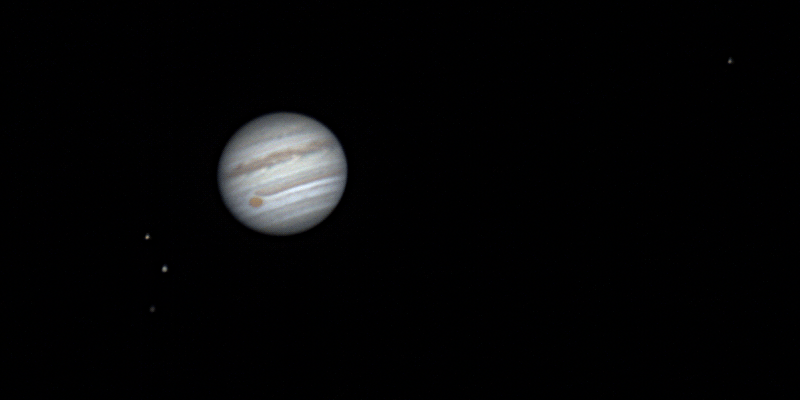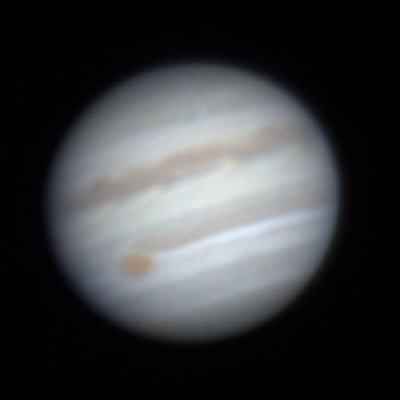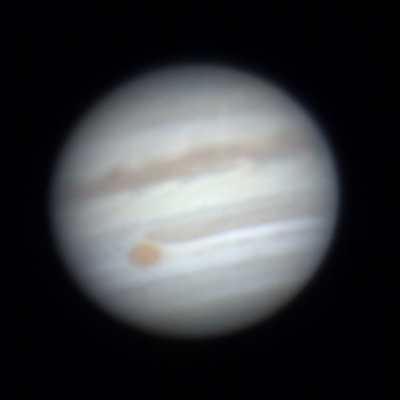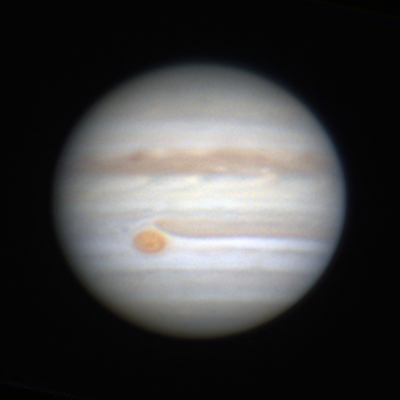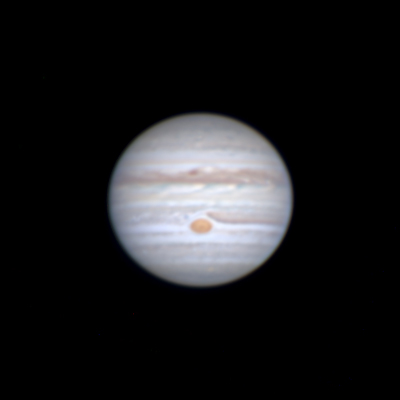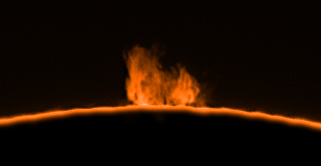Here are more images from my recent capture of the Saturn's polar hexagon. Infrared, up-sampling the video by a factor of 3.
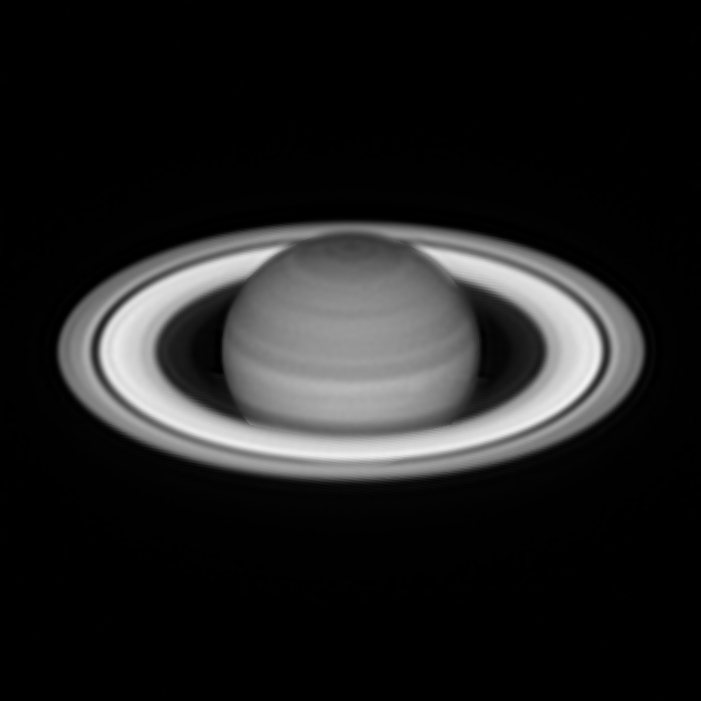 |
| Saturn with north polar hexagon, infrared image 6/26/18 7:45 UTC |
Here's a north polar projection, showing the hexagon:
The hexagon was not visible in my RGB image (click on image for full size):
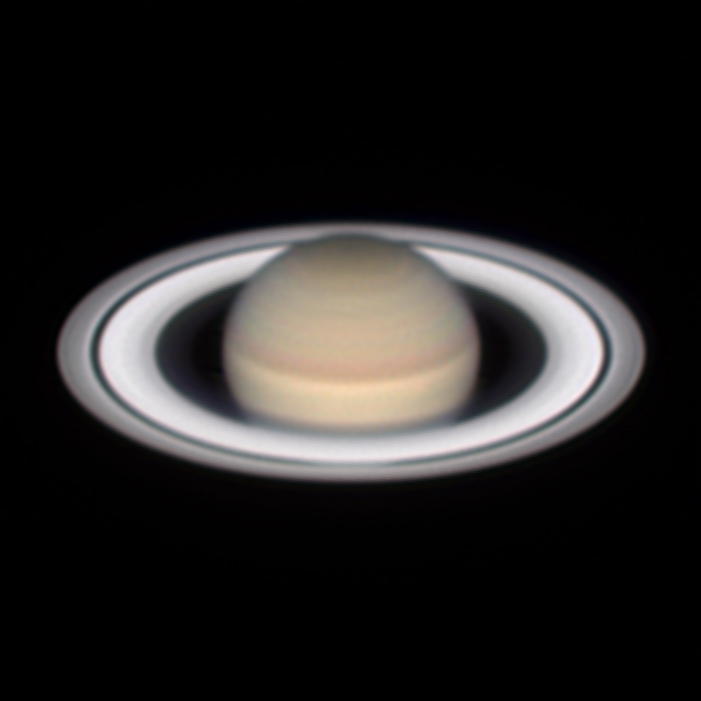 |
| Saturn RGB 6/26/18 7:45 UTC |
Here, I've added infrared as luminance to bring out the hexagon in the RGB image. You can also see that the banding on the disk is much more prominent in infrared (click on image for full size).
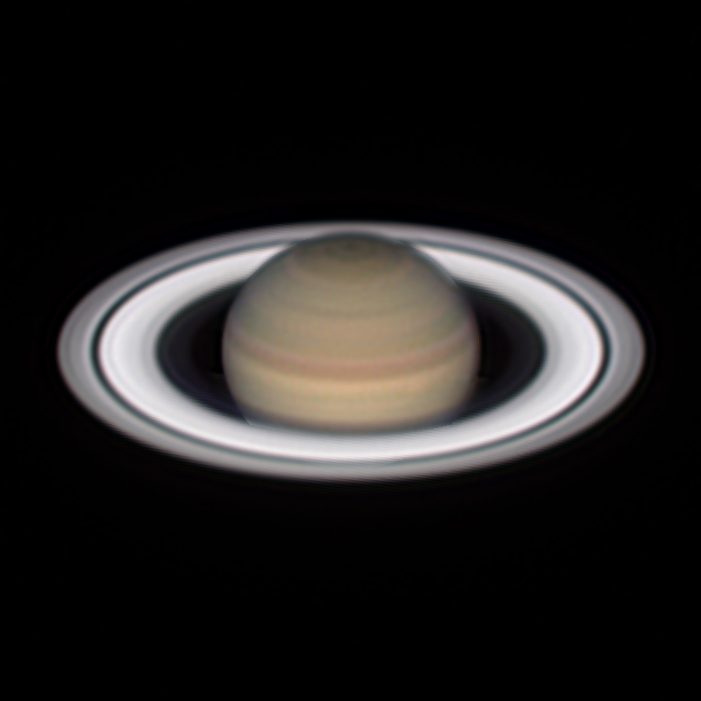 |
| Saturn with north polar hexagon, RGB with IR luminance 6/26/18 7:45 UTC |
Lastly, here's an annotated wider field:
The cause of the hexagon is still not clear. One theory is that a hexagon forms where there is a steep variation in the speed and viscosity of atmospheric winds. The hexagon was blue when it was discovered by the voyager probe in 1981, but has changed to a gold color. More information on the hexagon at wikipedia.
The north polar hexagon can only be imaged from earth when Saturn's north pole is tilted towards us. It was maximally tilted towards us last year and will be tilting away for the next 15 years, when the south pole will be facing us, then begin tilting back. So you can see the source of my urgency in capturing it.
image details
celestron 11" Edge HD
ZWO ASI 290MM
zwo RGB filters, Baader IR pass "685" nm
processed in PIPP
upsampled 3x in autostakkert
sharpened in registax
combined in winjupos
6/26/18 07:45 UT
Eastbluff
Southern California

